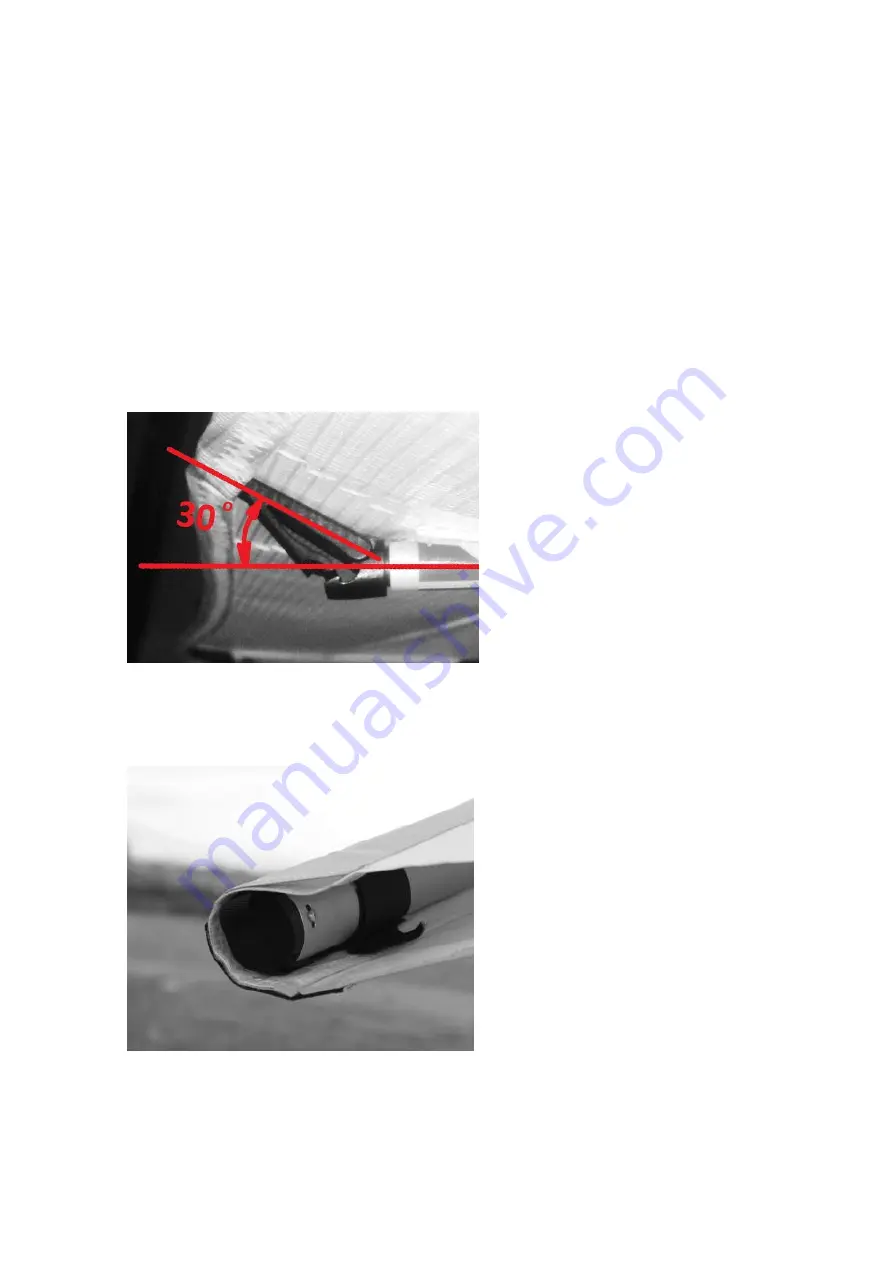
16
WARNING
DO NOT PERFORM MORE THAN ONE ADJUSTMENT AT ONCE. IF YOU DO NOT HAVE ENOUGH
EXPERIENCE TO TEST FLY THE WING, ASK MORE EXPERIENCED PILOT TO DO IT FOR YOU. IT
SHOULD BE PERFORMED IN SMOOTN AIR AND WITH CAUTION.
BATTENS
The battens will need to be compared and adjusted to match the batten profile template at regular
intervals. Small variations in batten camber (± 10 mm at the trailing edge) will not have significant effect
on flight characteristics.
BATTENS TENSION
With some airtime on the wing the battens tension may get too loose, this may cause the trailing edge to
flatter. If the battens tensioned too much, the handling will become harder. Make sure the battens tension
on both wings identical.
All battens on the Fox13-T are tensioned by lever batten tips. The desired batten tension can be easily
adjusted by the threaded batten tip adjuster.
Figure 37
The correct batten tension can be adjusted and
checked as follows. Unlatch the batten tip without
taking it out of the pocket at the trailing edge of
the sail. Measure the angle between the opened
part of the batten tip and the batten tube. If this
angle is about 30 degrees, then the batten tension
is adjusted correctly (fig. 37).
To increase batten tension rotate the threaded
lever batten tip adjuster counter clockwise. To
decrease batten tension rotate the threaded lever
batten tip adjuster clockwise.
SAIL MOUNT CAPS ADJUSTMENT
The turn of the wing can be corrected by rotating one of the sail mount plastic caps (fig.38).
Figure 38
A left turn is corrected by twisting the right sail cap
clockwise (twisting the sail up at the trailing edge).
A right turn is corrected by twisting the left sail
mount cap counter clockwise (twisting the sail up
at the trailing edge). If rotation of the plastic cap on
one side is not enough to compensate turn, you
can at the same time rotate the plastic cap on
another wing in opposite direction.
CG ADJUSTMENT
CG adjustment is done by changing the location of your hang point along the keel. The farther forward
your hang point is, the faster the wing will trim, the less effort will be required to fly fast, and the more
effort will be required to fly slow.













































